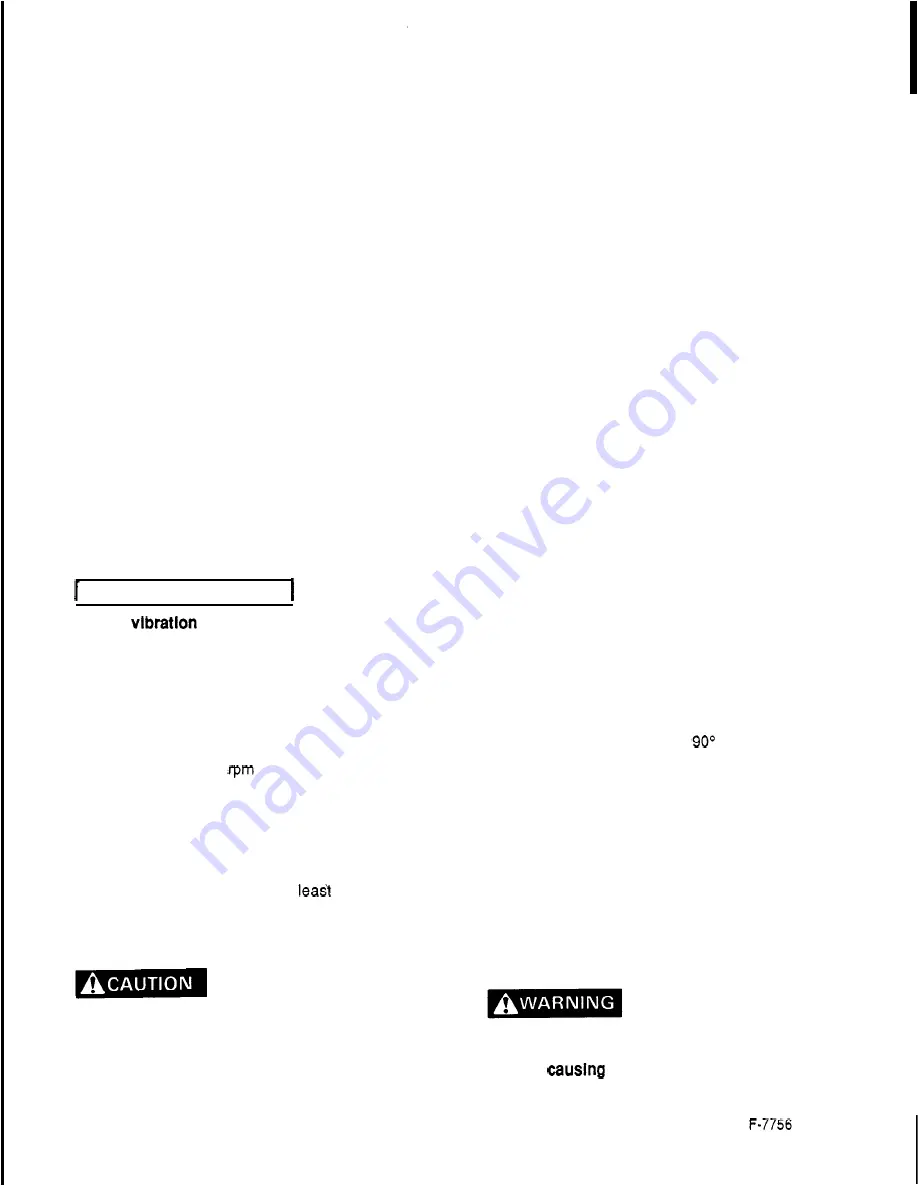
Pre-Operation Check List
Operate PTO at
2,000
rpm maximum.
Ensure both side skids, the left side shield and
either the discharge chute or right side shield
are installed.
No
riders are allowed on tractor or mower.
Do
not allow children or unqualified persons to
operate equipment.
Blades should
be
sharp, free of nicks and cracks
and securely fastened.'
Ensure shields and guards are properly installed
and
in
good condition.
Inspect area to be cut and remove stones, branches
or other hard objects that might be thrown, causing
injury or damage.
Check mower cutting height and attitude adjust-
ment.
Check to ensure caster wheels, spindles, drive shaft
and universal joints are lubricated.
IMPORTANT NOTICE
Mower
tends to loosen bolts durlng
Operation. All hardware should be checked
regularly to malntaln proper torque.
It
Is
a good
practice
to check
mower before
each
operation
to ensure all bolts are secure.
Power for operating mower is supplied by tractor
PTO. Do not exceed tractor manufacturer's rated
PTO speed of
2,000
maximum. Know how to
stop tractor and mower quickly in case of an
emergency.
Should mower become plugged, causing belt to slip,
immediately' maneuver equipment into
a
previously
cut area and allow mower to clear accumulated
material. Continue running at
two
minutes,
allowing pulleys to
cool.
Stopping the mower with
belt in contact with a very hot pulley
will
bake and
ruin belt.
Stop mower and tractor Immediately upon
striking an obstructlon. Turn
off
engine, remove
key, Inspect and repair any damage before
resuming Operation.
Operating Technique
Proper ground speed will depend upon the terrain
and the height, type and density
of
material to be
cut.
Normally, ground speed will range from
two
to five.
mph. Tall dense material should be cut at a low
speed;
thin medium-height material can be
cut
at a
faster ground speed.
Always operate tractor PTO at
2,000
rpm. This is
necessary to maintain proper blade speed and
produce a clean
cut.
Under certain conditions, tractor tires may
roll
some
grass down and prevent it from being
cut
at the
same height as the surrounding area. When this
occurs, reduce your ground speed, but maintain
2,000
rpm PTO speed. The lower ground
speed
will
permit grass to at least partially rebound.
Under some conditions, grass will
not
rebound
enough to
be
cut even.
In
general, lower cutting
heights give a more even cut with less tendency to
leave tire tracks. However,
it
is better to cut grass
frequently rather than too short. Short grass
deteriorates rapidly in hot weather and invites weed
growth during growing seasons. Follow local
recommendations for the suitable cutting height in
your area.
Tips
Extremely tall material should be cut twice. Set
mower at a higher cutting height for the first pass.
Then cut at desired height at
to the first pass.
Remember, sharp blades produce cleaner cuts and
require less power.
Analyze area to be cut to determine the best pro-
cedure. Consider height and type
of
grass and
terrain type: hilly, level or rough.
Plan your mowing pattern to travel straight forward
whenever possible. Mow with uncut grass to the
left. This will distribute the clippings over the cut
area. Discharging clippings over uncut grass will
cause a buildup and may prevent uniform cutting.
Inspect area to be cut and remove stones,
branches or other hard objects that might be
thrown,
injury or damage.
16
(1 0-89)
Summary of Contents for RM752A
Page 1: ......
Page 2: ......
Page 14: ...NOTES 12 F 7756 10 89 ...
Page 29: ...F 7756 10 89 NOTES 27 ...
Page 34: ...MOUNTING FRAME ASSEMBLY i 32 F 7756 10 89 ...
Page 40: ......
















































